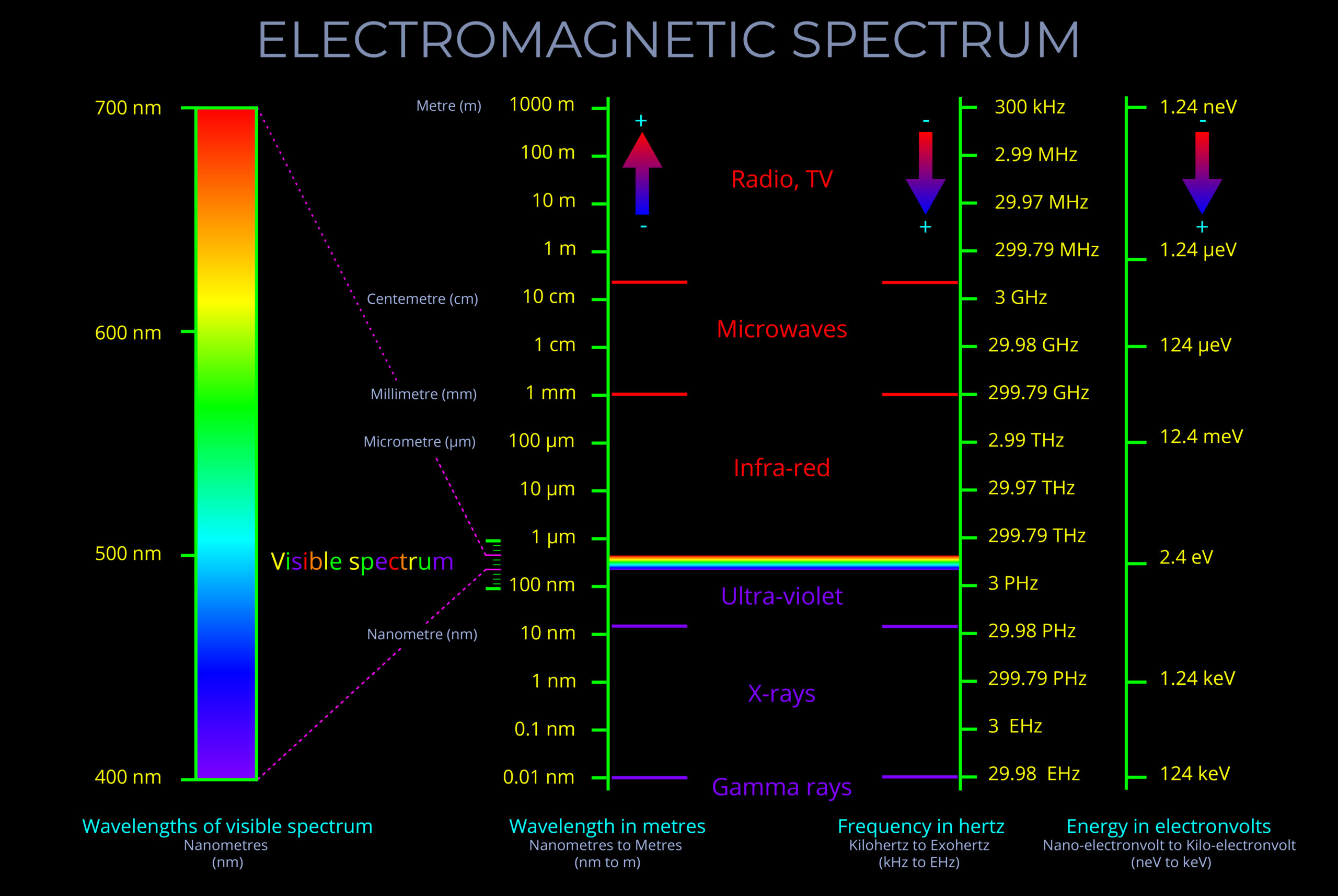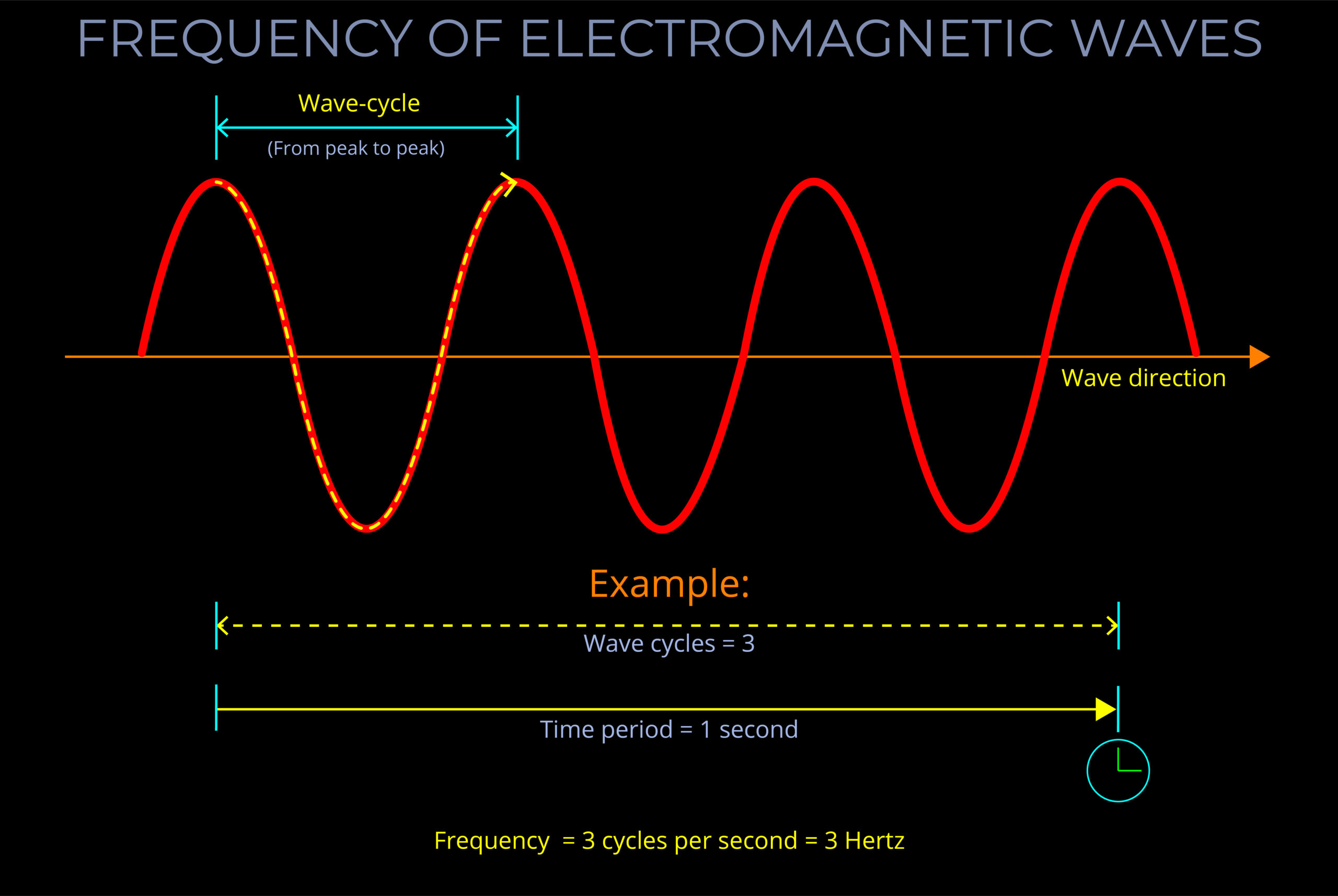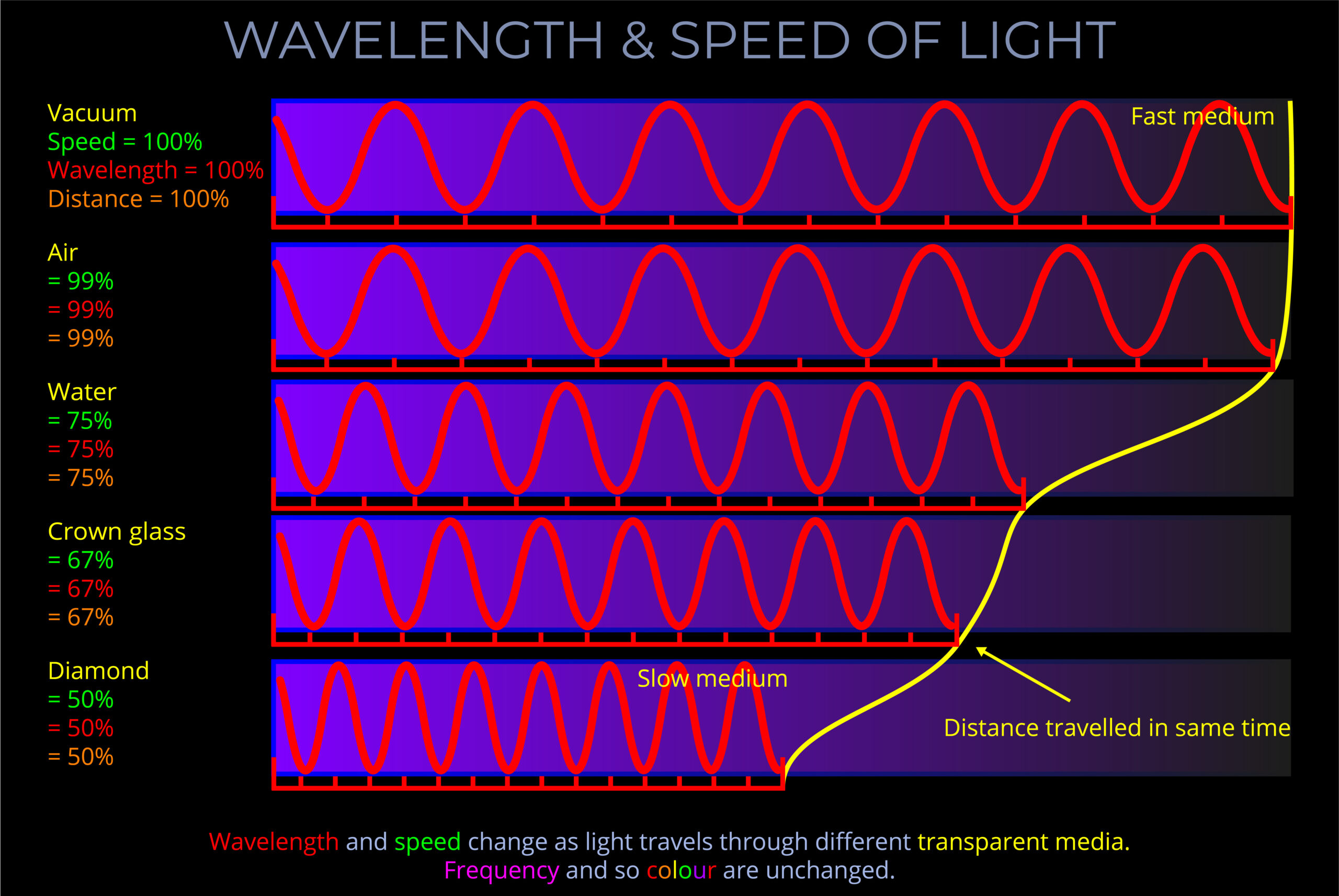Light waves are a name for electromagnetic radiation. They consist of self-propagating waves of electric and magnetic fields that travel through space. This wave motion transports energy but doesn’t involve the movement of physical matter itself.
- The distance between peaks in a wave is known as the wavelength. Different wavelengths correspond to specific portions of the electromagnetic spectrum.
- The visible spectrum, which our eyes can detect, occupies a limited range within this spectrum.
- Within the visible spectrum, red light has a longer wavelength than violet light.
- Light exhibits wave-particle duality. This means that light can demonstrate properties of both waves and particles (photons) depending on the experimental setup.
- Light waves interact with matter through various mechanisms. These include reflection (e.g., bouncing off a mirror), absorption (e.g., conversion of light energy to heat by dark clothing), and refraction (e.g., bending of light as it passes through a prism).
Key features
- Key features of electromagnetic waves are:
- Wavelength (λ): The wavelength of a light wave is the distance between two consecutive peaks or troughs of the wave. Wavelength determines the colour of the light, with shorter wavelengths appearing as blue or violet and longer wavelengths appearing as red or orange.
- Frequency (f): The frequency of a light wave is the number of wave cycles that pass a given point per second. Higher frequencies correspond to higher energy levels.
- Amplitude (A): The amplitude of a light wave refers to the height or intensity of the wave. The greater the amplitude, the brighter the light appears.
- Velocity (v): Velocity refers to the speed at which the wave travels through a medium, such as air or a vacuum. The velocity of light can be affected by the medium it travels through.
More about radiation, energy, waves & photons
- Electromagnetic radiation is carried by an electromagnetic wave.
- Electromagnetic radiation is measured in terms of the amount of electromagnetic energy carried by an electromagnetic wave.
- Electromagnetic waves are synchronized oscillations of electric and magnetic fields that propagate at the speed of light in a vacuum.
- The energy carried by electromagnetic waves is often referred to as radiant energy.
- Electromagnetic radiation can also be described in terms of elementary particles called photons.
- We can feel electromagnetic waves release their energy when sunlight warms our skin.
- The position of an electromagnetic wave in the electromagnetic spectrum can be characterized by either its frequency of oscillation or wavelength.
- The electromagnetic spectrum includes, in order of increasing frequency and decreasing wavelength: radio waves, microwaves, infrared radiation, visible light, ultraviolet radiation, X-rays and gamma rays.
- The limit for long wavelengths is the size of the observable universe which is estimated to be around 93 billion light-years in diameter.
- The short wavelength limit is still a topic of theoretical debate and research, and it is not yet definitively known whether there is a limit at the Planck length.
- Light waves are a name for electromagnetic radiation. They consist of self-propagating waves of electric and magnetic fields that travel through space. This wave motion transports energy but doesn’t involve the movement of physical matter itself.
- The distance between peaks in a wave is known as the wavelength. Different wavelengths correspond to specific portions of the electromagnetic spectrum.
- The visible spectrum, which our eyes can detect, occupies a limited range within this spectrum.
- Within the visible spectrum, red light has a longer wavelength than violet light.
- Light exhibits wave-particle duality. This means that light can demonstrate properties of both waves and particles (photons) depending on the experimental setup.
- Light waves interact with matter through various mechanisms. These include reflection (e.g., bouncing off a mirror), absorption (e.g., conversion of light energy to heat by dark clothing), and refraction (e.g., bending of light as it passes through a prism).


